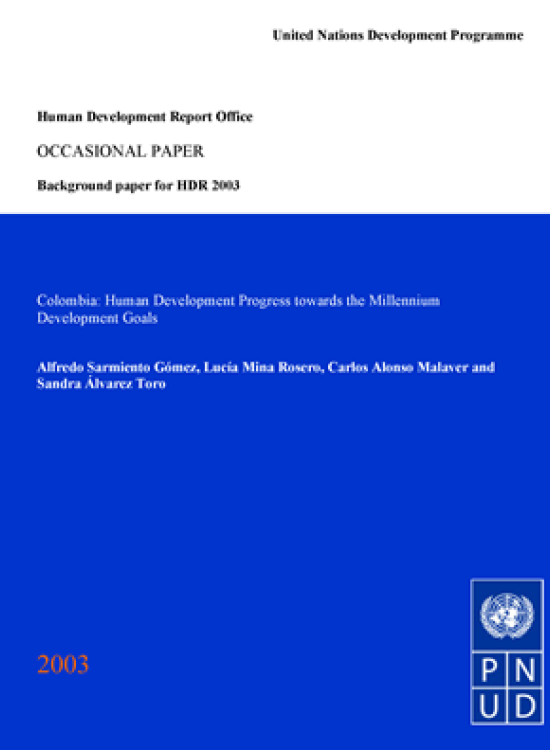Colombia: Human Development Progress towards the Millennium Development Goals

Download Report by Language
Document
colombia2003.pdf
(398.04 KB)
Citation
Sarmiento Gómez, Alfredo, Mina Rosero, Lucía, Malaver, Carlos Alonso, Alvarez Toro, Sandra. 2003. Colombia: Human Development Progress towards the Millennium Development Goals. New York.
Colombia: Human Development Progress towards the Millennium Development Goals
Posted on: January 01, 2003
During Nineties, human development in Colombia has improved, even though growth has not been continuous. Human Development Index (HDI) increased nearly 6% between 1991 and 2001 from 0.728 to 0.771. In 1997 it reached 0.776, the highest value of the decade. According to UNDP classification published as part of the Human Development Report 2002, during 2000, Colombia is placed as the 68th from 173 countries. Colombia’s progress is quite unequal not only between urban and rural areas but also among provinces. The provinces from the Pacific Coast excluding Valle del Cauca, the southern municipalities of the Atlantic Coast and those different from capitals from New Provinces,1 with the actual path will not reach most of Millennium Goals. Despite that fact it is important to note the progress found in basic education and access to potable water. This paper assess, with available information, human development and the progress to meet World Development Goals (WDGs) in Colombia. The study identifies the provinces that are lagging or slipping behind in reaching the goals. It also highlights common characteristics that explain progress towards their achievement. The paper has been structure in four sections. The first section deals with human development, the second discuss WDGs trends and finally, in the third and four sections, we explain the facts behind the disparities among provinces.